Think Tel Aviv is only about clubs and beaches? Think again! This city is also an UNESCO world heritage site, thanks to a huge concentration of bauhaus-style buildings. The combination of one of the earliest modern urban master plans and a collection of some four thousand Bauhaus buildings, makes the White City of Tel Aviv a great destination for anyone interested in architecture and urban landscapes.
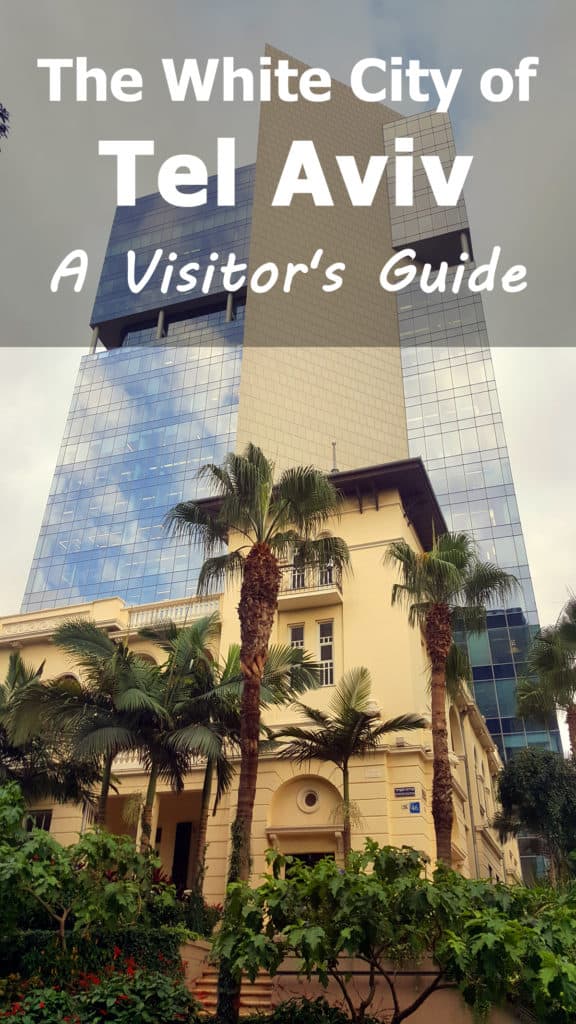
Tel Aviv is the second largest city in Israel and arguably the center of Israel's economy and culture. It's a vibrant city, where cafes and restaurants are always open and beach parties last for days. Tel Aviv certainly lives up to its slogan: The city that never stops.
No wonder it's a magnet for young hip Israelis from all over the country and for tourists too. At the same time, the city celebrates its own past, preserving and conserving old buildings and entire neighborhoods and curating the entire area of the White City of Tel Aviv. Nothing quite like the combination of old and young to really make a city truly come alive.
Update: Since writing this post, I added another guide about visiting Tel Aviv since. It's a review of 11 cool things to do in Tel Aviv. I'll link to it in the end of this post too (so you don't have to click right now).
A (very) brief history of Tel Aviv
Tel Aviv is a young city, by Israeli standards. It's just over a century old in a country of settlements - towns and cities - that are thousands of years old. But what a century it was! In case you're not familiar with the early days of the metropolis, here's the story in a nutshell.
Tel Aviv began as a vision. 66 Jewish families got together in 1906 and decided they would create the first Hebrew city. Hebrew, as opposed to Jewish quarters in the old cities of Jerusalem, Haifa, Acre and other mixed Arab-Jewish towns and cities across the land. They wanted to create something new: A modern city, with wide streets, running water and sewage systems.
So, they formed an association, raised money and bought a large parcel of land. In 1909 they gathered on the beach and ran a draw to decide which family gets which lot. They used sea shells for drawing the lots, isn't that romantic?
More families arrived, many of them driven out of nearby Jaffa during riots in the 1920's. The city was growing fast, so its first mayor - Meir Dizengoff, contracted pioneering urban planner Sir Patrick Geddes to form a proper urban master plan. Geddes suggested a grid of main streets - many of which lead to the beach - and blocks of quiet living quarters in between them. streets and lines of wide avenues running between them, connecting people's homes to the urban centers.
In the coming decades, Tel Aviv became a center of commerce and arts. Distinctly different from religious Jerusalem, the new city established itself as an up and coming cultural force in the developing Israeli society. This difference was prominent in the city's layout and architecture. Young architects went abroad to study in Europe - mostly Germany - and returned to design beautiful buildings in the clean functional Bauhaus style, adjusted for the local climate and mentality.
So why is this a World Heritage Site?
According to UNESCO, the "world heritage site" status was accorded to Tel Aviv for two reasons -
1. The city's layout
This is the first modern city that was built according to a master plan. Pioneering urban planner Sir Patrick Geddes' vision of an environmental "living" city is reflected in the low-lying blocks of apartment buildings, nestled between main roads that connect the beach to the city center.
2. The Bauhaus architectural style
Tel Aviv has more than four thousands registered historic Bauhaus buildings. Various Jewish architects created these buildings in the early 20th century, as they brought Geddes' plan to life. These buildings have a clean minimalistic design that relies on geometric shapes to be both functional and beautiful.
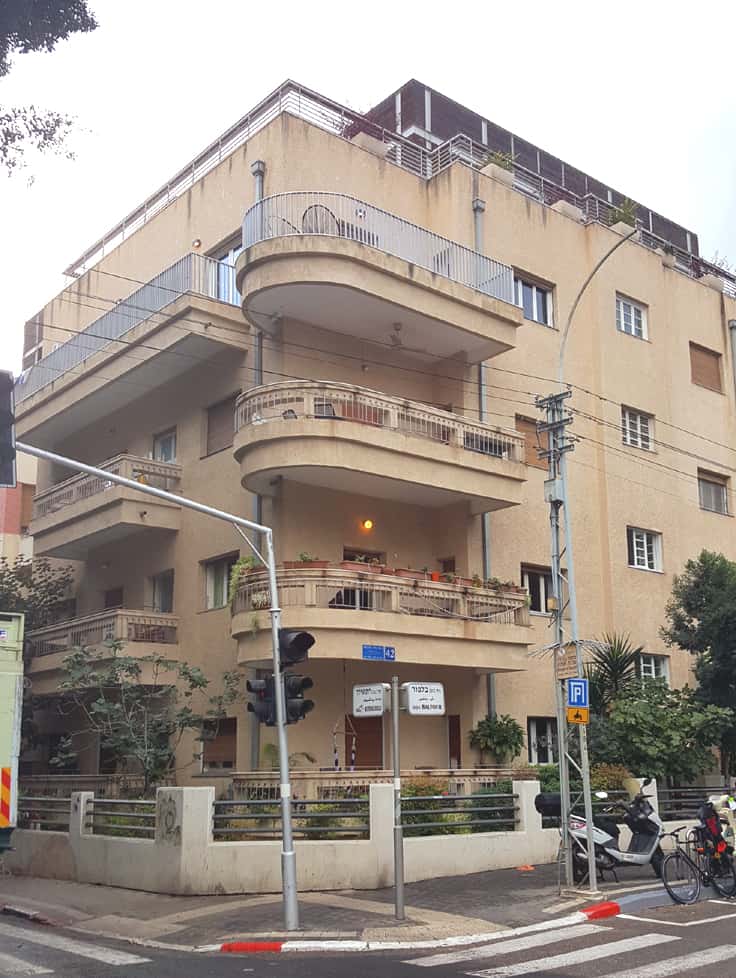
You don't have to be a designer to appreciate the beauty of the White City. As you walk these streets in Tel Aviv, it's easy to sense that there's something unique and even extraordinary about it. As an Israeli and a former Tel Aviv resident (we used to live in an original Bauhaus building!), there is something that easily tells Tel Aviv apart from any other city in Israel, possibly the world.
What to expect when visiting Tel Aviv's White City
If you're expecting some majestic white museum-like area, you could be disappointed. This is Tel Aviv: A hot, humid, crowded city that's very much ALIVE. To help set your expectations, here are some things you should and shouldn't expect.
- The White city is not white. Or at least, not all white. Bauhaus buildings are usually light-colored but they can be cream, sand, light-blue, gray and yes, sometimes white as well.
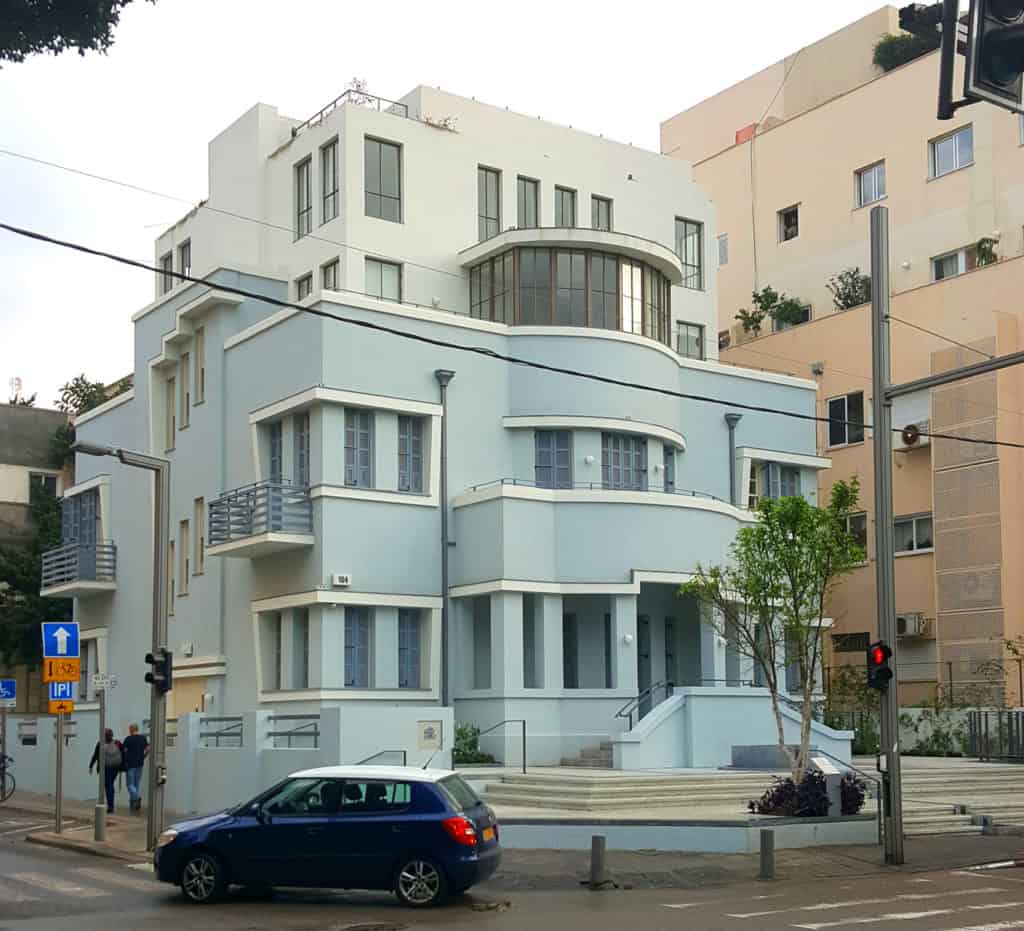
Light blue building in the White City - The White City of Tel Aviv: A Visitor's Guide - Not all of the buildings are well-preserved. Most are, as the city of Tel Aviv puts a lot of effort into conservation, but with this being a living city, buildings tend to deteriorate and not each and every one of them will be in pristine condition.
- Some of the buildings are dirty. In case you're wondering what this dirt is, I'm told it's bat excrement. They try to clean them often but those bats are persistent!
- The buildings are concentrated in several areas, not one. There's going to be some walking involved.
- If you visit during summer - it's going to be hot and humid. More on that later.
- Tel Aviv is vibrant and filled with coffee shops and restaurants. Tel Aviv is a foodie's heaven but it's not cheap. Still, you can always fuel up on a quick espresso for $2-$3 just about anywhere.
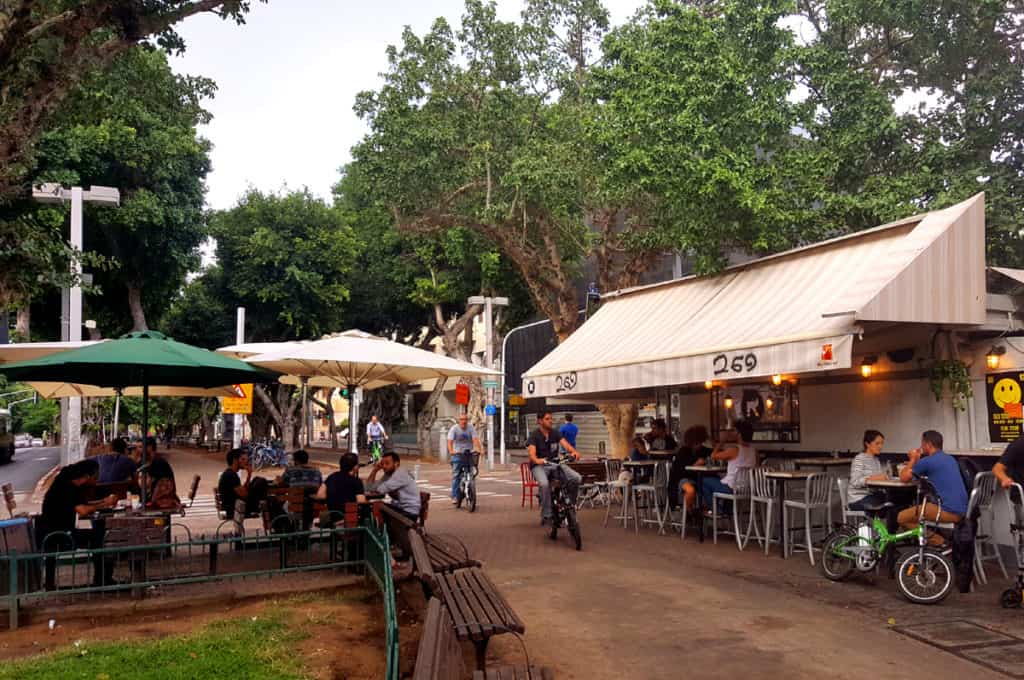
Coffee shops along Rothschild Blvd - The White City of Tel Aviv: A Visitor's Guide
When should you visit?
Tel Aviv is very hot and humid during summertime. And summer in Tel Aviv is pretty much anytime between April and October. Judging by our guests, some travelers appear to enjoy the heat. Just don't expect any of us locals to accompany you on a day tour of Tel Aviv in August. If you're not one to enjoy hot humid weather and your visit happens to be during summer, consider strolling through the White City in the early morning or late evenings.
Between November and March, Tel Aviv is much cooler but you could get some rain, so watch the forecast and grab an umbrella for your stroll if they think it might rain.
How to see the White City
First, let me tell you how not to see the White City: Avoid driving around. Don't think you can drive in, park your car by the houses, take some pictures and drive on to the next street. Tel Aviv is not a very good driving destination, sorry. Not only are the roads crowded and the drivers mediterranean (i.e. impatient), you won't be able to find a parking spot anywhere. Most street parking is reserved for locals and even they struggle to find an available spot. I'm afraid Sir Geddes failed to plan for 21st traffic...
So, what can you do? The easiest would be to walk. Tel Aviv is a very walkable city. What's more, you're not really going anywhere very specific, so ambling around on foot would be perfect. The White City's buildings can be found in many locations around the city center. I'll be recommending a few streets in a minute, but they're not the only places where you can see Bauhaus buildings. Stroll around and you should be able to spot them yourself.
Another good option would be biking. Tel Avivians cycle around a lot and many streets have bicycle lanes. What's more, you can rent a pair from automatic stations and return them when you're done. A great way for any traveller to cover more ground.
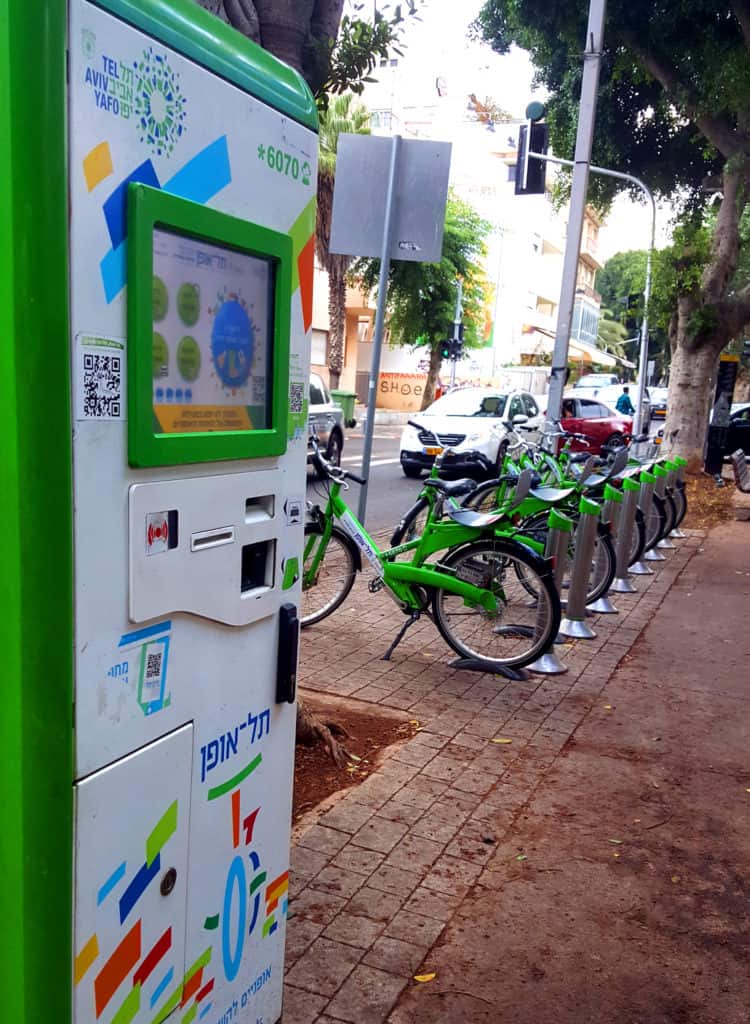
Should you get a guided tour?
Some people love guided walking tours while others prefer to see a place at their own pace. To experience the White City of Tel Aviv, I actually think a self-guided tour is enough. In fact, I wouldn't even call it self-guided. I think you can absolutely get the experience through strolling around and soaking up the atmosphere.
That said, if urban planning, urban history or architecture is your passion, you may want to take a guided tour. Several companies offer them so you can just Google "Tel Aviv guided walks". If you happen to be around on a Saturday (Shabbat), the city offers a free walking tour of the White City. Paid guided tours are available on Fridays by the Bauhaus Center, located at 77, Dizengoff street (and mentioned in my suggested itinerary below). The Bauhaus Center also offers self-guided audio tours.
So, where are we going exactly?
If you prefer to explore entirely on your own, here's a suggested walking itinerary. This route will take you to hundreds of gorgeous Bauhaus buildings and give you a nice sense of the urban layout, including the wide boulevards and the adjacent smaller streets where people actually live.
Again, feel free to saunter into other streets and alleys. You never know where you'll find another hidden architectural gem that you could fall in love with!
The White City of Tel Aviv: Suggested Walking Itinerary (4km/2.5 miles)
1. Rothschild Boulevard
Start your tour at the southern end of Rothschild Blvd and head north along this street for a great example of Geddes' vision. The middle of the street is one long urban garden, with walking and bicycle paths. You'll find small coffee shops almost at every intersection and an overall lively atmosphere, right alongside apartment buildings. There's even a street library where people are welcome to pick a book - no registration needed - and use the lawn chairs for an outdoorsy reading experience.
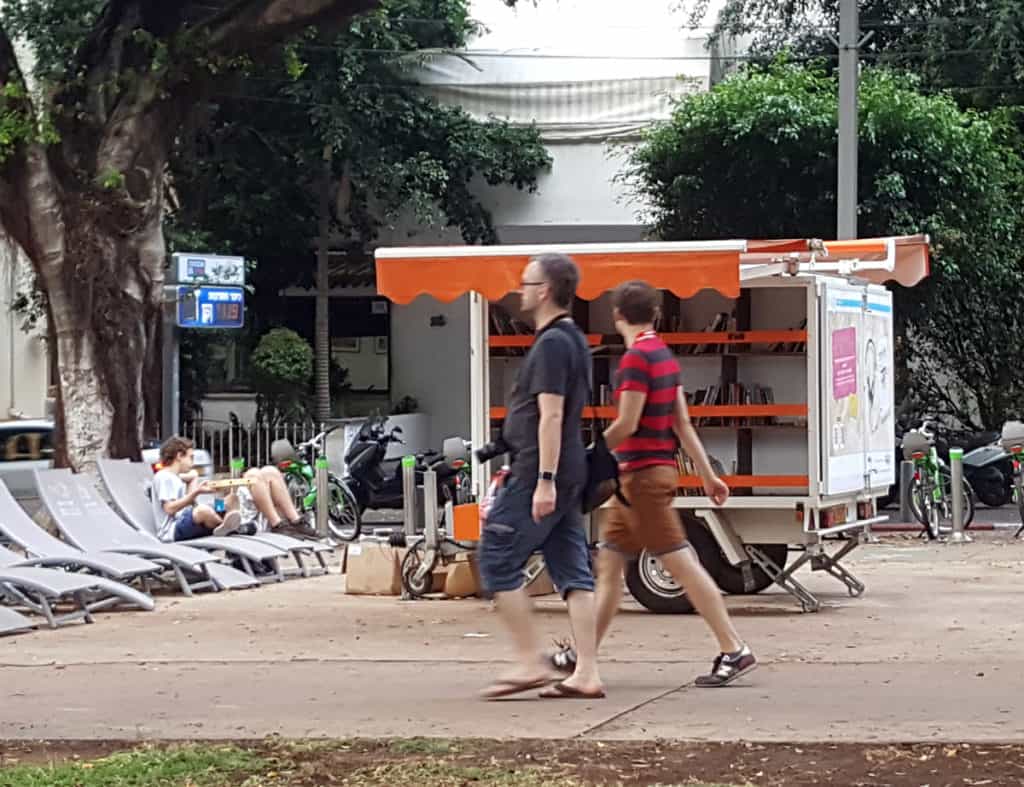
If you're interested in the history of the State of Israel, stop at Independence Hall (Rothschild Blvd 16) where Ben Gurion made his famous speech declaring the establishment of the State of Israel. The hall looks like it did during Ben Gurion's speech and there's also a movie and a small display.
The entire street has Bauhaus buildings - this is the classic White City of Tel Aviv - some better preserved than others. In fact, most of the pictures in this post were taken along Rothschild Blvd. You may want to cross from the main path to the pavements of either side of you, just to take a few more pictures. The small streets on both sides of the main avenue are also classic "White City" streets. Wandering around these will bring you closer to more Bauhaus buildings. In fact, if you have the time, go through the parallel Echad Ha'am street for some great examples of bauhaus architecture.
2. Kikar HaBima
At the northern end of Rothschild Blvd, you'll find a large landscaped square. This is HaBima Square, or Kikar HaBima, named after Israel's National Theatre (HaBima). Although the square's landscaping design is fairly recent, this is the location Geddes had planned for the city's cultural center.
3. Beit Hai'ir
Walk down Bograshov street - one of the "veins to the sea" in the urban master plan - until you reach King George street. Turn left and then right into Meir Garden. Walking paths will take you from the garden to your next stop, Beit Hai'ir, which literally means "the town's home". This beautiful building was indeed the City Hall between the years 1925 and 1965. Today it's an art center with permanent displays about the city's history and architecture, so walk right in if you're interested in the topic.
Even if you don't want to see the displays, take a few minutes to stroll down Bialik street. Named after Israel's national poet, it is one of the oldest streets in Tel Aviv with beautiful examples of bauhaus architecture.
4. Dizengoff Street
From Bialik street, follow the route to one of the most central streets in Tel Aviv: Dizengoff. This street - named after the first mayor of Tel Aviv - is pretty much an Israeli culture icon. You can also see many bauhaus buildings on both sides of the street. Here - at 77, Dizengoff st - you'll find the Bauhaus Center, a small visitors center with a gallery and shop. Check out their website for in-depth guided tours. Guided tours in English are available every Friday morning but you can also rent an audio guide for a self-guided tour. Check their website for more details about the tours.
If you have time, you may want to visit inside the Dizengoff Center Mall. Its award-winning design tries to continue the Bauhaus themes and create a "little Tel Aviv" inside the mall. On Thursdays and Fridays there's a great food market inside the mall, with a huge variety of dishes and pastries.
You don't have to end your stroll through the White City of Tel Aviv here. Whether you continue to walk along Dizengoff or turn to the smaller streets around you, you can keep enjoying more Tel Aviv sights and bauhaus buildings.
I hope you found this guide helpful. If you have any more questions about visiting Tel Aviv or Israel, feel free to drop me a line in the comments. As promised, here's that link to my list of 11 things to do in Tel Aviv again. If you're looking for a place to stay in the big city, these hotels in Tel Aviv on the beach are all great for exploring all over - including in the White City of Tel Aviv.
And just a few more photos I took of the White City of Tel Aviv -
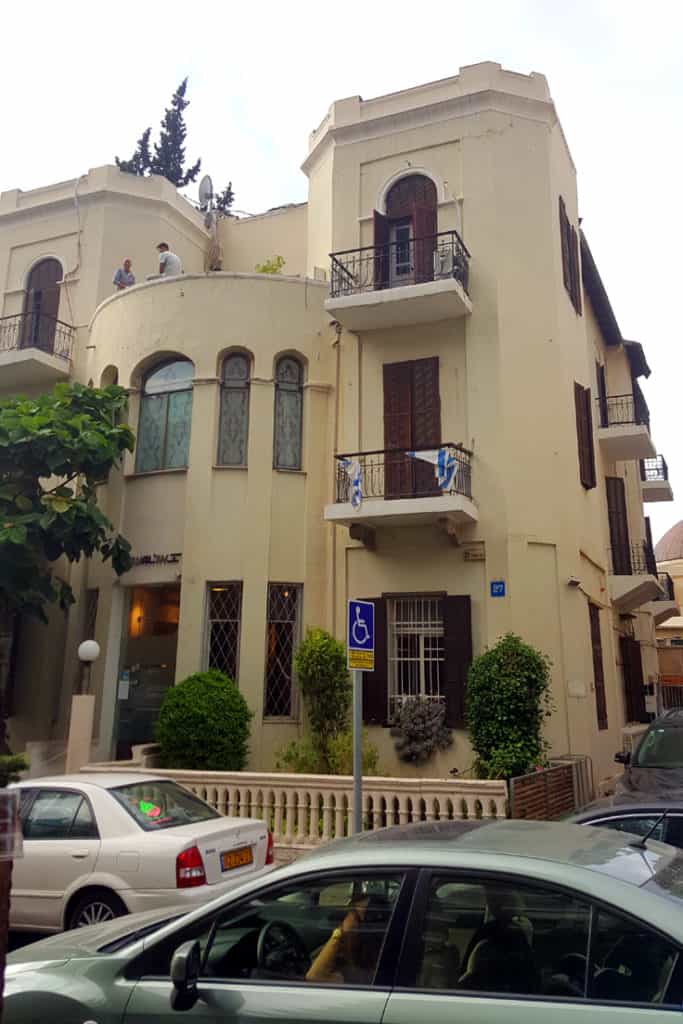
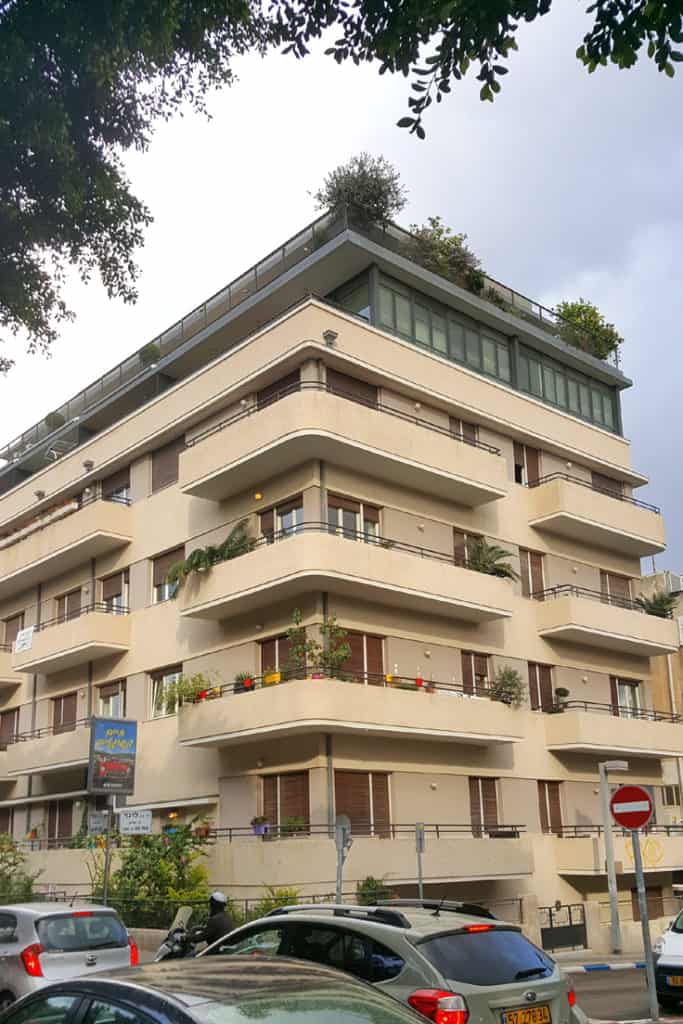
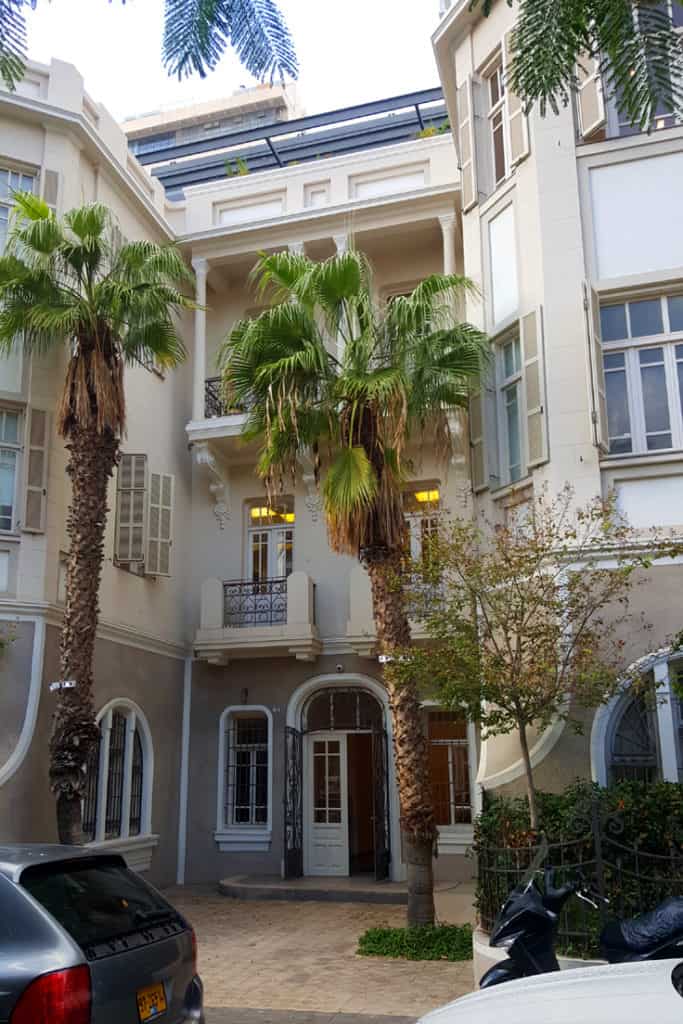
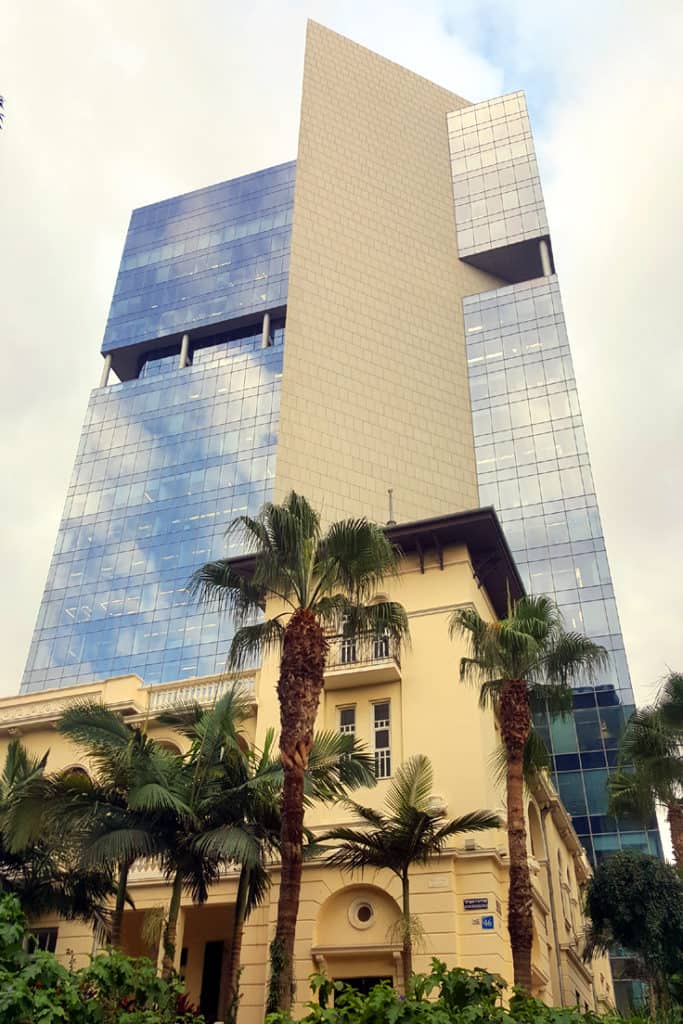
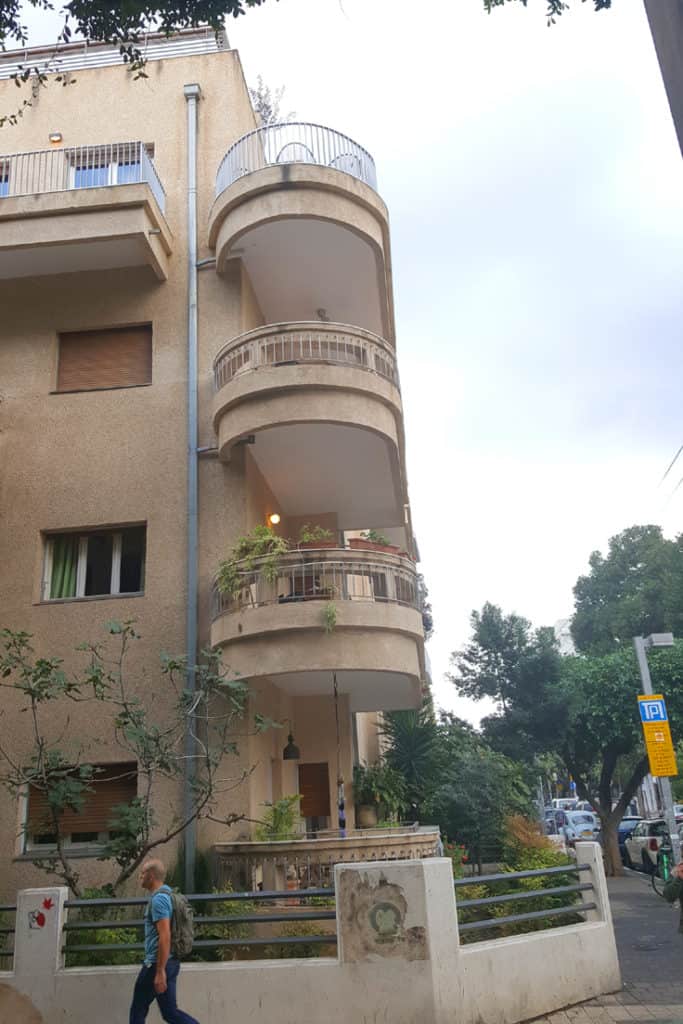
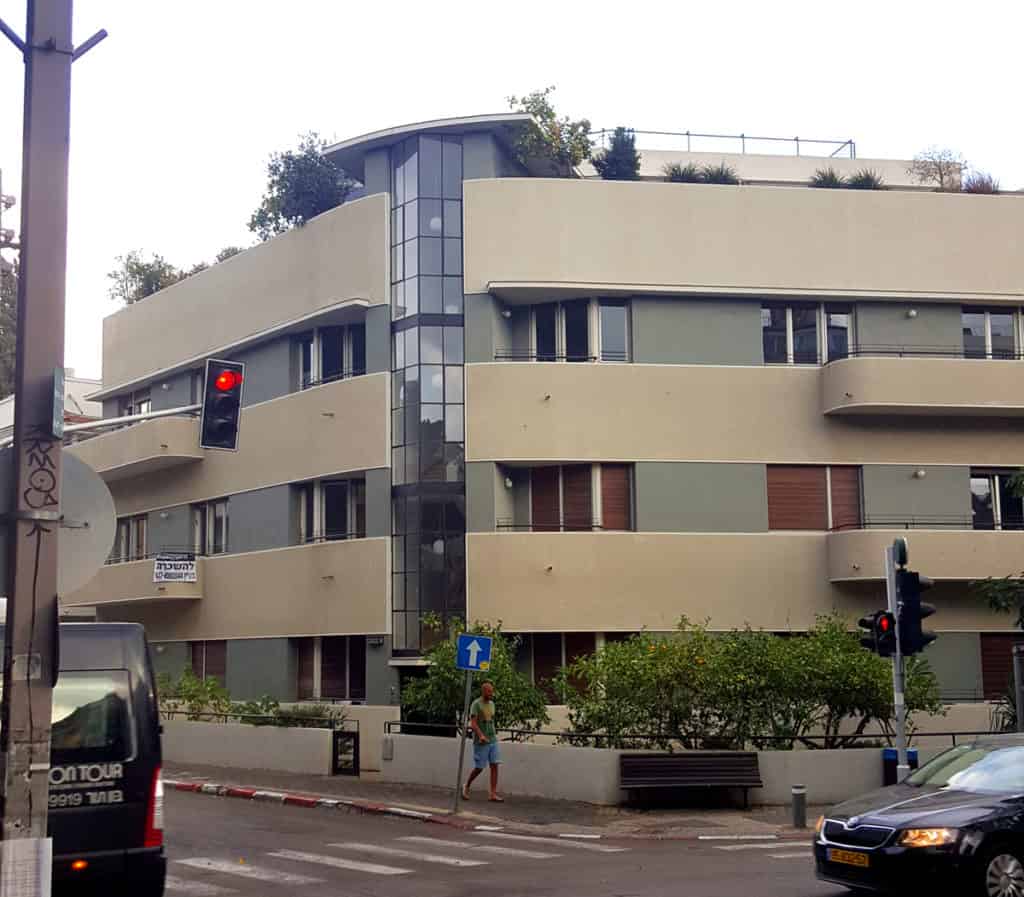
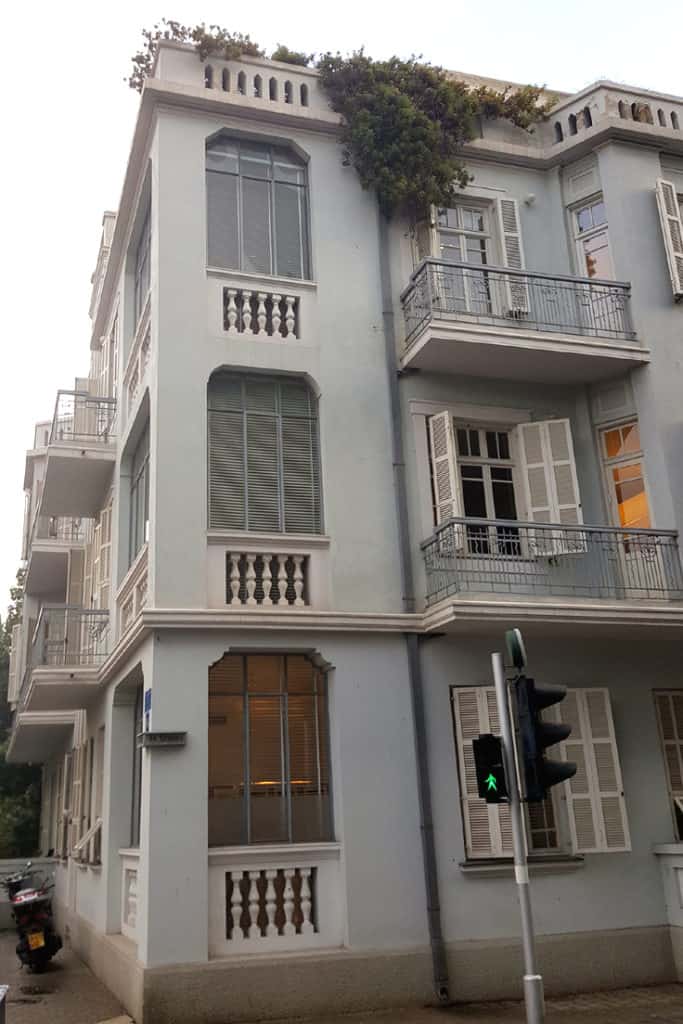
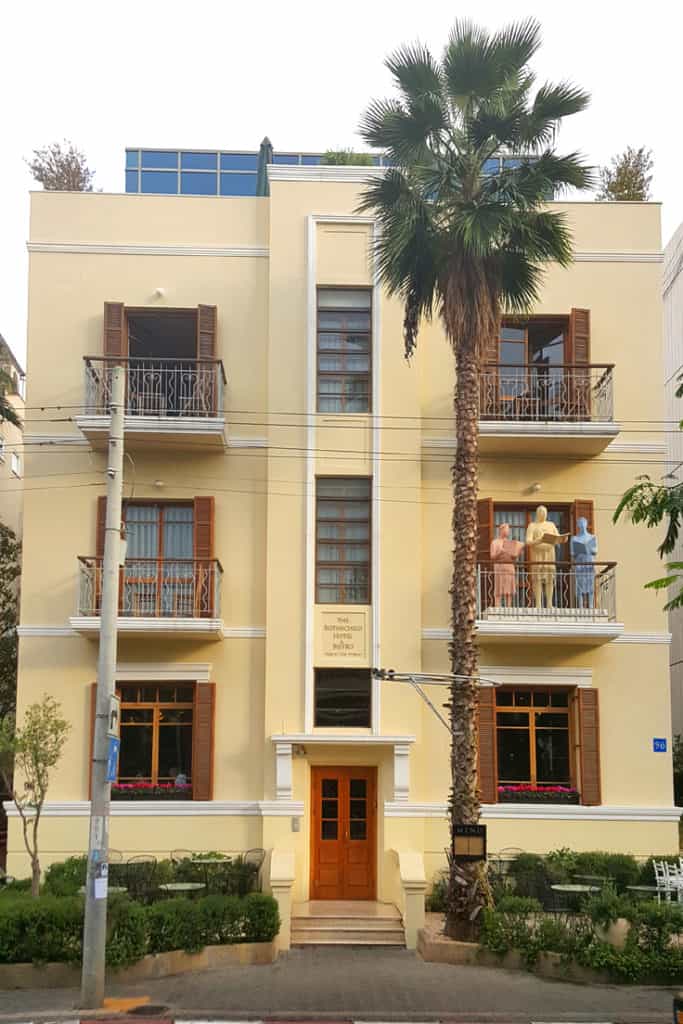
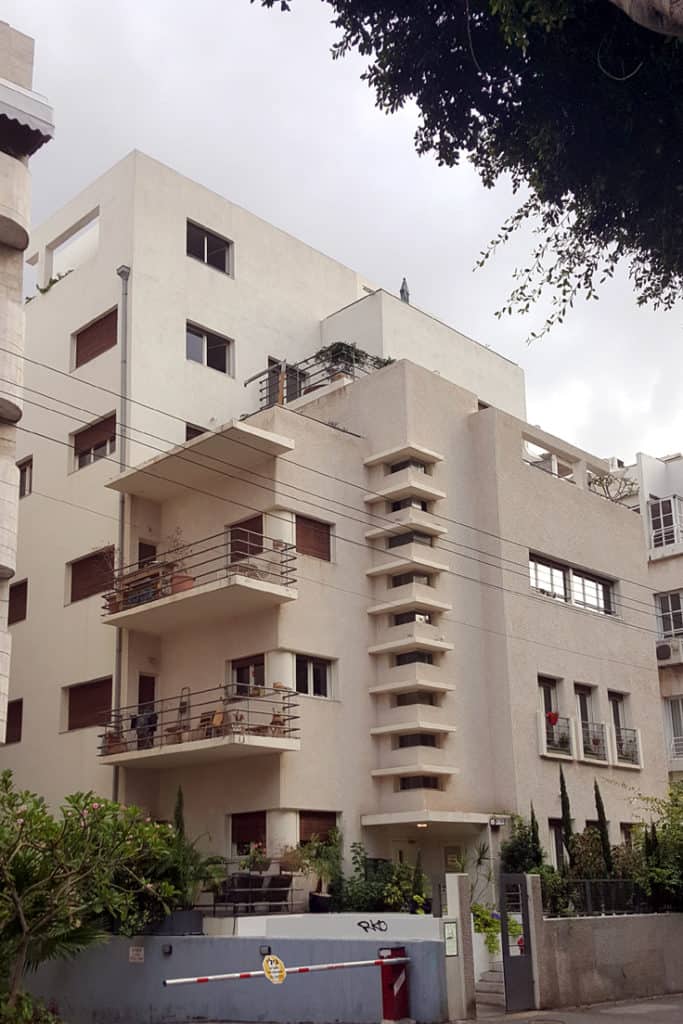

Wow!! So much to do and see in Tel Aviv. The Bahaus thing is a revelation.